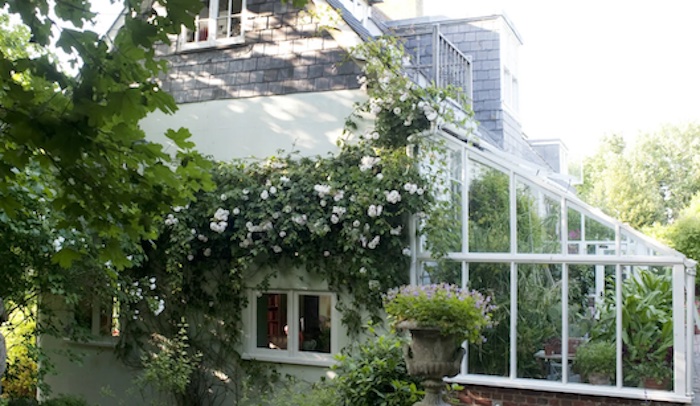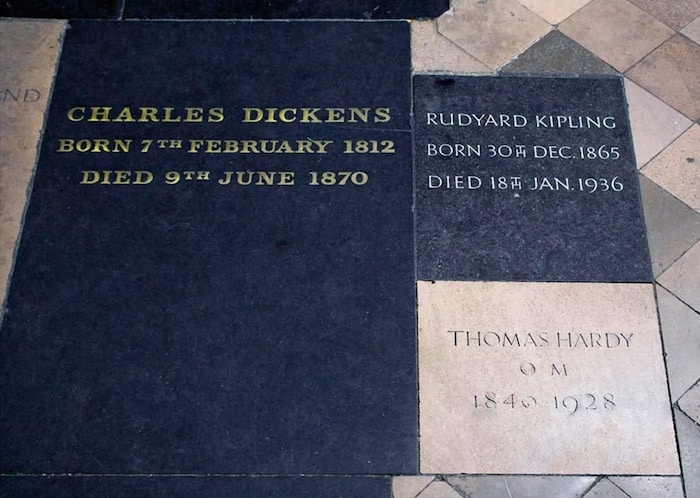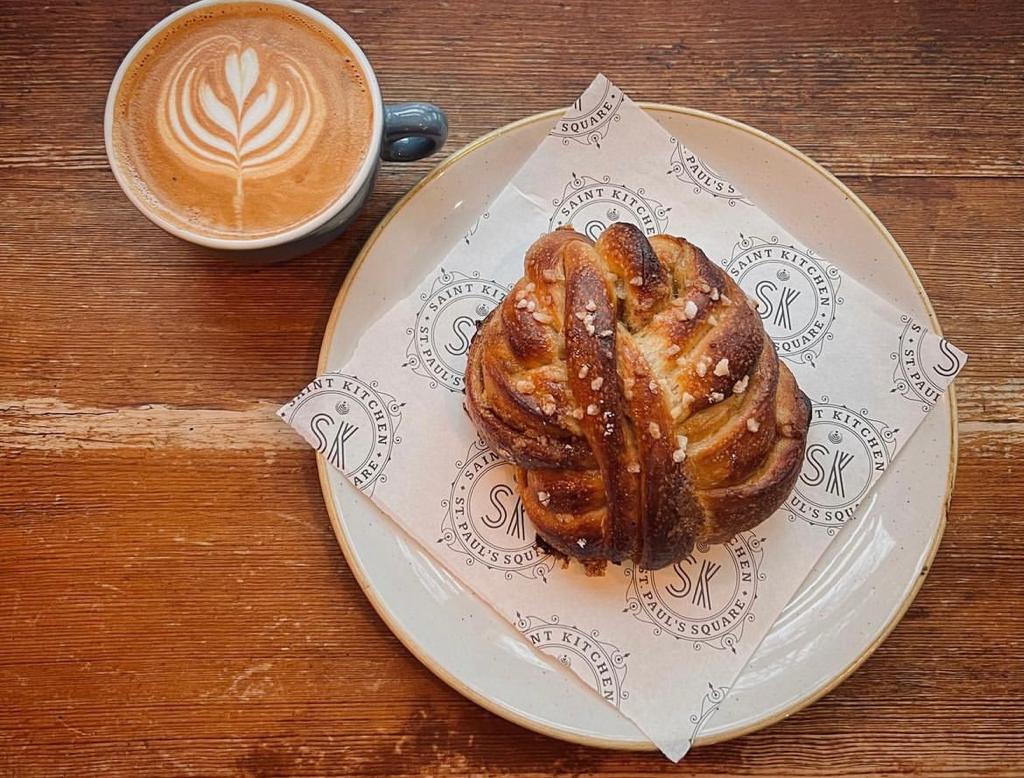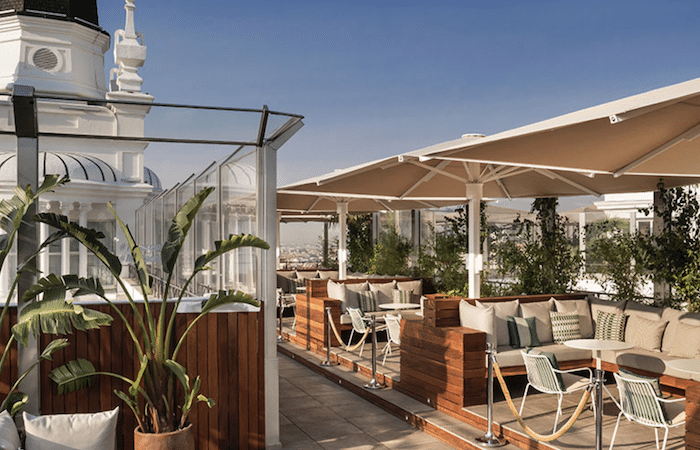The literary landscape of the United Kingdom is a treasure trove. So many notable writers, from William Shakespeare to Jane Austen to Beatrix Potter, originate from here. So if you’re a British bibliophile looking for your next book-themed getaway, keep reading to learn about museums, rustic cottages, estates, churches, and even hiking trails associated with some of your favourite authors! Here are 25 of the best literary places in the UK for book lovers.
25 of the Best Places in the UK for Book Lovers
1. Brontë Parsonage, Haworth
The Brontë Parsonage Museum is a must-see for any fan of the Brontë sisters’ works. The home has been repaired and refurbished to reflect its original appearance during the time when Charlotte, Emily, and Anne resided there. Haworth, fittingly nicknamed “Brontë Country,” is a must-see for fans of classics like Wuthering Heights and Jane Eyre. Visitors should not miss the Brontë Parsonage Museum, formerly the Brontës’ family home, and the adjacent village of Thornton, where they were born. Wuthering Heights and The Tenant of Wildfell Hall were both influenced by Ponder Hall, a stately house in the region, as did Earnshaw Farm in Wuthering Heights.
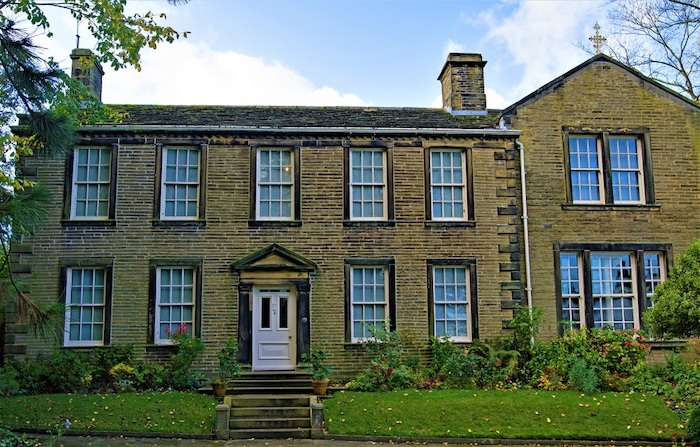
2. Keats House, London
The former residence of Romantic poet John Keats is now a museum dedicated to his work as a writer. It is found in Keats Grove, Hampstead. It was in this beautiful home that Keats fell in love with and married Fanny Brawne, who lived with her family in the adjacent house. Keats penned “Ode to a Nightingale,” a poignant poem that chronicles his descent into a condition of “negative capability,” as he put it, which ultimately took his life. It was written around the time that the poet recognized the first symptoms of the illness (tuberculosis) that would take his life. At this museum, you can find live poetry readings and exhibitions of original manuscripts and memorabilia.

3. The Eagle and Child Pub, Oxford
R. R. Tolkien and C. S. Lewis, creators of the fantastical realms of Middle Earth and Narnia, both frequented the Eagle and Child bar. They were also close friends and members of The Inklings, a writers’ club that convened in the pub’s Rabbit Room on a regular basis. Among the members of the Inklings were also Charles Williams, Owen Barfield, and Hugo Dyson. They began meeting on Thursday nights in Lewis’s college room at Magdalen, where they would read and debate different materials, including their unfinished novels, many of which went on to become bestsellers and classics. Found on St. Giles’ Street in Oxford, this pub is also known as The Bird and Baby.

4. Ashdown Forest, East Sussex
The Ashdown Forest contains real-life locations from A. A. Milne’s Winnie the Pooh books. This preserved property in East Sussex is filled with forested hills and babbling streams. Here, you can go on hikes that take in the main Pooh locations mentioned in the books, including the famed Poohsticks Bridge, Owl’s Tree House and the Hundred Acre Wood. The author resided near the hamlet of Hartfield, on the outskirts of this enchanted woodland. If you want to really feel like you’re part of the Christopher Robin gang, there are several lovely picnic places along the road. Pooh Corner, a devoted store to Winnie-the-Pooh in Hartfield Village, also offers a café and an area where youngsters may play and read books.

5. Hill Top House, Lake District
Beatrix Potter’s 17th-century cottage in the Lake District of Cumbria is a renowned tourist destination. Potter wrote 13 of her 23 books here, including the famous Peter Rabbit books, and many of her most iconic passages are set on the estate. The home has been converted into a museum, and the surrounding area is a beautiful place to visit. Beatrix worked on her letters and books in the main room upstairs, which she referred to it as her library with a view of the wondrous Lake District from her window. As you walk past the home, you’ll see a tiny vegetable garden with rhubarb where Jemima Puddle-Duck famously tried to hide her eggs.

6. Poet’s Corner, London
Poets’ Corner is recognized by the great number of poets, playwrights, and novelists who are buried and honoured in the South Transept of Westminster Abbey. Originated over 600 years ago as Geoffrey Chaucer’s last resting place, Poet’s Corner now also commemorates Charles Dickens, William Shakespeare, Alfred Tennyson, Jane Austen, W H Auden, and the Brontë sisters, among others. Memorials may take a variety of formats. For instance, some are just plain old stone slabs, while others are beautiful stone monuments, hanging stone tablets or memorial busts. Furthermore, some of them, such as Lord Byron’s, are not placed until many decades after their death.
7. Shakespeare Centre, Stratford-upon-Avon
One of the most beautiful places in England, Stratford Upon Avon, was the home of this 16th-century poet and playwright. Many lovely wooden half-timbered homes and places related to his life may be found here. To begin, visit the Shakespeare Centre, where the poet was born and raised. Here, you can observe a beautiful film segment where Homer Simpson brings to life a famous scene from Hamlet. You’ll also discover a wide range of lesser-known quotations from Shakespeare’s works as well as his personal possessions. Other places of interest nearby include his daughter’s home (Hall’s Croft), his mother Mary Auden’s house, and the cottage of his wife, Anne Hathaway.

8. Shakespeare’s Globe, London
Visiting Shakespeare’s Globe on a literary tour of the UK is a must. Located in the London Borough of Southwark on the south bank of the Thames, Shakespeare’s Globe is a recreation of the Elizabethan theatre for which William Shakespeare penned his plays. The Globe Theatre was built in London’s Bankside neighbourhood in 1599 by Shakespeare’s troupe, The Lord Chamberlain’s Men, and they performed in this theatre until 1605. There are several exhibitions and seminars about Shakespeare and London, as well as play readings called “Read Not Dead” of scripts that were written between 1576 and 1642 by Shakespeare’s contemporaries or close contemporaries.
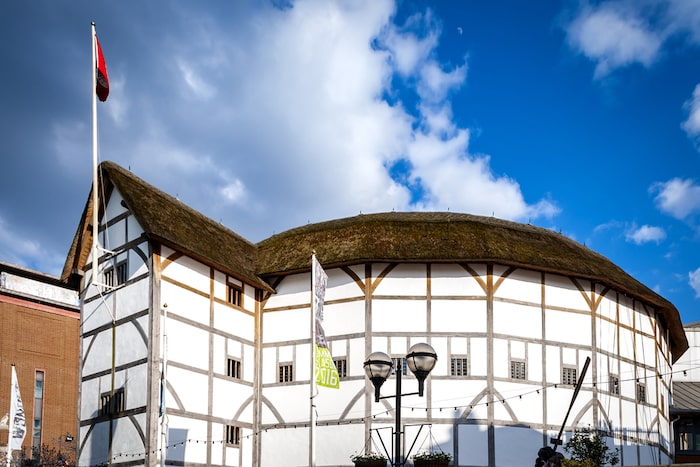
9. The Jane Austen Centre, Bath
Jane Austen is unquestionably the Bath’s best-known inhabitant. Despite Austen’s disdain for Bath, the city is mentioned multiple times in her novel, Northanger Abbey. Visit the Jane Austen Centre, which explains the narrative of Austen’s life in Bath as well as her writing, and the Regency Tea Room, which allows you to experience period living by eating traditional cakes, tea, and scones in style. You may also visit the Royal Crescent, which is home to Georgian terraced residences, which often feature in Austen adaptations on television and the big screen.

10. Jane Austen’s House, Chawton
Although most people associate Jane Austen with Bath, Chawton Cottage, in Hampshire, is where the acclaimed author spent much of her time and penned some of her most renowned works, such as Sense and Sensibility and Pride and Prejudice as well as Mansfield Park, Emma, and Northanger Abbey. In addition to her writing-table and pianoforte, the 17th-century home is now a museum dedicated to her works and has most of the original furnishings. The museum has only three items of jewellery believed to have belonged to Austen, a turquoise bracelet, a topaz crucifix, and a turquoise and gold ring. The museum is also a Grade I listed structure.

11. Charles Dickens Museum, London
The Charles Dickens Museum is located at Doughty Street in Holborn, where the author resided from 1837 to 1839 and authored Oliver Twist and Nicholas Nickleby. On each level, you’ll find authentic furnishings and a well-stocked library. It’s also worth checking out the interesting Handmaid’s Tour, which takes you back in time to 1839 and allows you to trace the footsteps of the family and gain a rare view into upper-class Victorian life. If you’d like to delve deeper into Dickens’ life, you can visit his birthplace in Portsmouth or his family’s vacation house in Broadstairs.

12. Dove Cottage, Grasmere
At the age of 29, William Wordsworth landed in Grasmere, England, with nothing to his name and a new kind of inventive poetry. He penned several of his best poetry while residing at Dove Cottage, with his wife Mary and sister Dorothy. When you visit, you’ll see that they’ve re-created snippets from Wordsworth’s poetry, notebooks, and letters to tell their story of “plain living and high thinking”. There are fields of daffodils nearby that were the inspiration for his famous poem, I Wandered Lonely as a Cloud. Samuel Taylor Coleridge and other Romantic luminaries visited Wordsworth during his time in this house.
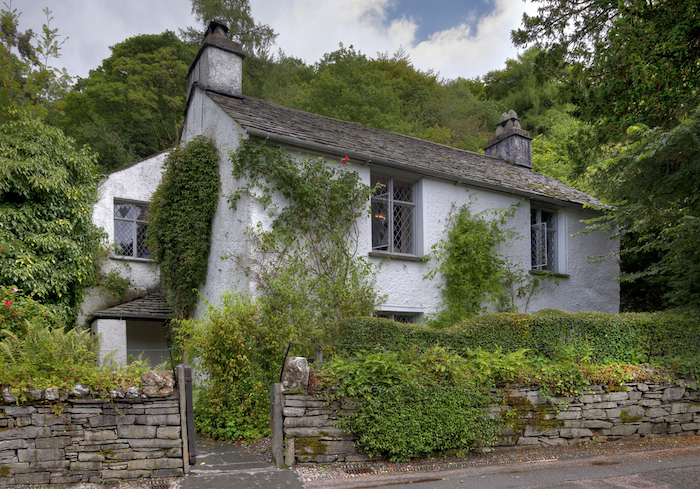
13. Christ Church, Oxford
Did you know that Alice in Wonderland originated in the city of dreaming spires? Lewis Carroll first encountered Alice Liddell, the inspiration for his protagonist of Alice in Wonderland, when he was studying at Christ Church. The stained glass at Christ Church’s dining hall shows Alice with her long blonde hair and trademark blue clothing. At the very beginning of the novel, Alice fights to pass through a door with a lovely garden on the other side, and the ‘Alice Door’ at Christ Church was the inspiration! After you’ve explored every nook and cranny at Christ Church, head to Cafe Loco, where John Tenniel has decorated the walls of his café with illustrations from the book. The cafe’s name is a nod to the famous “we’re all mad here” quote by Cheshire Cat.

14. Gandy Street, Exeter
Given that J.K. Rowling attended the University of Exeter, it’s no wonder that many of the city’s landmarks have inspired locations and characters in the novels. Gandy Street likely provided the inspiration for Diagon Alley’s magical atmosphere. The Vaults Nightclub looks just like Gringotts Bank with its white, curving exterior; and the spooky resemblances between the door at No. 10 Cathedral Close and the Room of Requirement are also remarkable. In addition to Exeter, a number of other Devonshire towns and villages have inspired numerous Harry Potter motifs. For example, the coastal village of Budleigh Salterton gives its name to the fictional village of Budleigh Babberton, and Ilfracombe is the site of the 1932 “Ilfracombe Incident” mentioned in the book about a Common Welsh Green dragon.

15. Platform 9¾ at King’s Cross Station, London
Speaking of Harry Potter, the iconic Platform 9¾ is located between Platforms 9 and 10, but in reality, it is located on the western departures concourse. You’ll see a luggage trolley, complete with a trunk and owl cage, protruding from the wall. More importantly, you’ll typically find a gaggle of fans posing with a Hogwarts scarf and a terrified expression- just like Harry when he first ran headfirst towards the wall. There’s also a Harry Potter shop nearby where you can get yourself a magical memorabilia. Alternatively, you can visit the Warner Bros. Studio Tour in Watford if you’d like to board the Hogwarts Express for yourself!

16. Max Gate, Dorset
Thomas Hardy was one of many authors who found inspiration in Dorset’s patchwork hills, chocolate box villages, and absence of traffic. Many of his books, short tales, and poems were set in his semi-fictional Wessex, which he based on the area around Dorchester. Max Gate, the red brick residence constructed by Hardy himself, is only a short drive from his birthplace at Higher Brockhampton. In 1870, English author and poet Thomas Hardy met his first wife, Emma, while vacationing in the wildflower meadows of Valency Valley in North Cornwall. Hardy’s works were influenced by both the location and Emma herself. Lastly, you may pay your respects in St. Michael’s Church, where he is entombed.
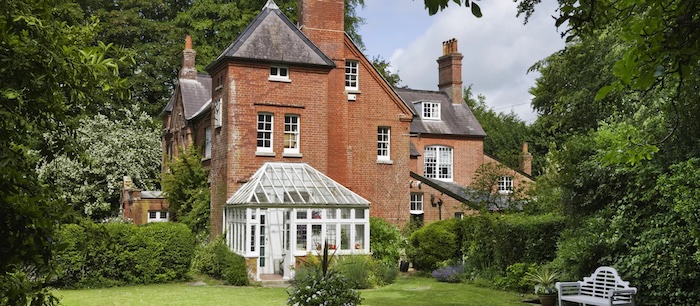
17. Brantwood Estate, Brantwood
John Ruskin, an English writer, philosopher, art critic, and polymath who was one of the most influential figures of the Victorian period. He wrote everything from essays and treatises to poetry and lectures to travel guides and how-to books and even fairy tales. His residence at Brantwood, a 250-acre estate, was from 1871 until 1900. From the estate, you can enjoy features spectacular views of Coniston Water and the surrounding fells, as well as the most incredibly maintained gardens. It’s now possible for the general public to go on a tour of the mansion, gardens, art gallery, and treasury. The grounds are pet friendly and you can rent the historic apartments outside the main house.

18. Sherlock Holmes Museum, London
221B Baker Street, is a well-known landmark in London because of its association with the famed (fictional) detective, Sherlock Holmes. Holmes and Dr. Watson lived there from 1881 until 1904 as tenants of Mrs. Hudson. 221B Baker Street recreates the rooms from the novels, including Holmes’ laboratory. You may also visit the Sherlock Holmes Public House and Restaurant, wlocated close by. The appeal of the English master detective is as strong as ever, and fans still flock outside his house today even though it has been nearly a century since Sir Arthur Conan Doyle passed.

19. Whitby Abbey, Whitby
Whitby Abbey is a well-known literary hotspot. It was Bram Stoker’s 1897 book Dracula that made Whitby famous, and this stunning seaside town crowned by the gothic castle still stands today. A few weeks in 1890 saw Bram Stoker visiting the seaport, where he found inspiration for his frighteningly famous story. Whitby has grown into a bustling city, but it has its own charm, and if you go off the main drag, you may avoid the tourist throngs. Other works that have portrayed Whitby include Possession by A.S. Byatt and Sylvia’s Lovers by Elizabeth Gaskell. Benjamin Myers’ The Offing takes place in the adjacent town of Robin Hood’s Bay.

20. The Old Swan Hotel, Harrogate
Romance and intrigue permeate the hotel from its spinning entrance to the Wedgwood Restaurant’s iconic glass-ceilinged ceilings. When Agatha Christie vanished for 11 days in 1926, it was to The Old Swan that she went, causing a public outcry. Agatha Christie’s disappearance provoked a nationwide search at the height of her career. It even drew Sir Arthur Conan Doyle and Dorothy L Sayers to look into the mystery! Finally, it emerged that she had checked into the Swan Hydropathic Hotel as ‘Mrs. Teresa Neele’ from Cape Town. Staying at the (now renamed) Old Swan Hotel is still possible today, and crime-novel fans from all over the world come here for that unique experience.

21. Bateman’s, East Sussex
At Bateman’s, you’ll find a 17th-century mansion nestled among the picturesque Weald region. With his wife and children, Rudyard Kipling occupied this lovely Jacobean mansion from 1902 till the time of his death in 1936. During this time, he produced the poem “If—”. The National Trust restored Kipling’s study as he left it. His cluttered workstation with ink splatters, the cigarette burns on his daybed, and the book-lined walls are all signs that this was his personal place. With his daughter, Elsie Kipling’s help in the second part of the 20th century, Bateman’s was opened to the public and visitors witnessed an accurate portrayal of the house in which she grew up. As a tribute to her father, she also curated a collection of mementoes and family heirlooms in the exhibition room.

22. The Jane Eyre Trail, Peak District
This Jane Eyre Trail is a wonderful opportunity to combine literature and nature. The Jane Eyre Trail is a 5.5-mile (8-kilometre) trek through the stunning terrain that inspired Charlotte Brontë’s novel Jane Eyre, which was first published in 1847. It begins at the George Hotel in Hathersage, once operated by a landlord named Morton in Brontë’s day and whose name she adopted for the imaginary settlement in Jane Eyre. It then takes you through North Lees Hall, reputedly the pattern for Rochester’s Thornfield Hall; then up to Stanage Edge, a place that has featured in films like Pride and Prejudice; and finally Moorseats, which inspired the Moor House where the St. John siblings in Jane Eyre live.

23. Lyme Regis, Dorset
The Dorset seaside village of Lyme Regis not only lured literary greats such as Oscar Wilde, Beatrix Potter, and Jane Austen for their summer vacations but also inspired many of their greatest works. Beatrix Potter, for example, visited Lyme Regis and drew a variety of locales for her second book about a pig called Little Pig Robinson, including a picture of Broad Street, which is currently on display at the Lyme Regis Museum. In a similar vein, Jane Austen visited Lyme Regis in England at least twice in the early 1800s and based Persuasion, her last novel, there. You may go down the Cobb and witness the stairs from where Louisa Musgrove fell on the famed harbour wall, as well as the inns described in Persuasion.

24. Elizabeth Gaskell House, Manchester
84 Plymouth Grove was the home of Victorian bestselling author Elizabeth Gaskell. She wrote here when she dominated the Manchester literary scene in the late 1800s and early 1900s. Publishing firms are moving their headquarters to this booming metropolis. At Gaskell’s former home, you can sit on the furniture (which is not original!) and take in the atmosphere of Gaskell’s favourite residence. Visitors may also enjoy the Tea Room, the Villa Garden, the rotating exhibits, and the historical chambers in this wonderfully restored property. Tea and cake appears in vintage chinawaer in the tearoom too. As an added bonus, there’s a used book store and a little garden on the property.
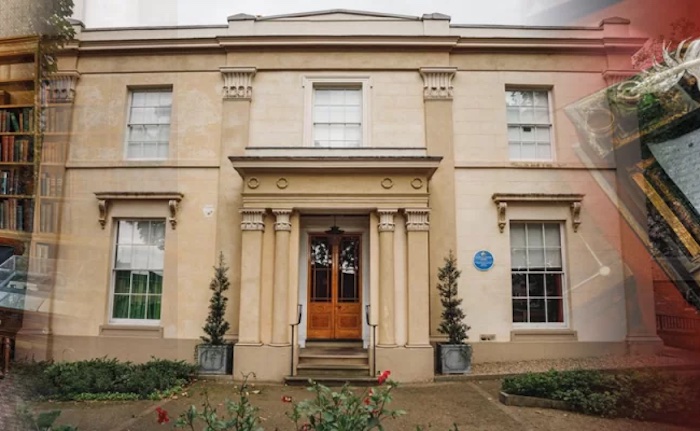
25. Monk’s House, East Sussex
It was in 1919 that Leonard and Virginia Woolf purchased Monk’s House in the Sussex Downs as a tranquil place to write away from the bustle of London. Despite having no water, gas, electricity, or even buses, its rustic simplicity and beauty were much loved by the couple. Nevertheless, over the course of their 50-year stay, the Woolfs made significant improvements to their home. You can also find the Woolfs’ magnificent art collection and personal belongings on display at Monk’s House. And Woolf’s sister, Vanessa Bell, and her lover, Duncan Grant, created artwork for the walls and furniture of the house that are still present today. The writing cabin in the garden was where Virginia penned most of her most important writings.
